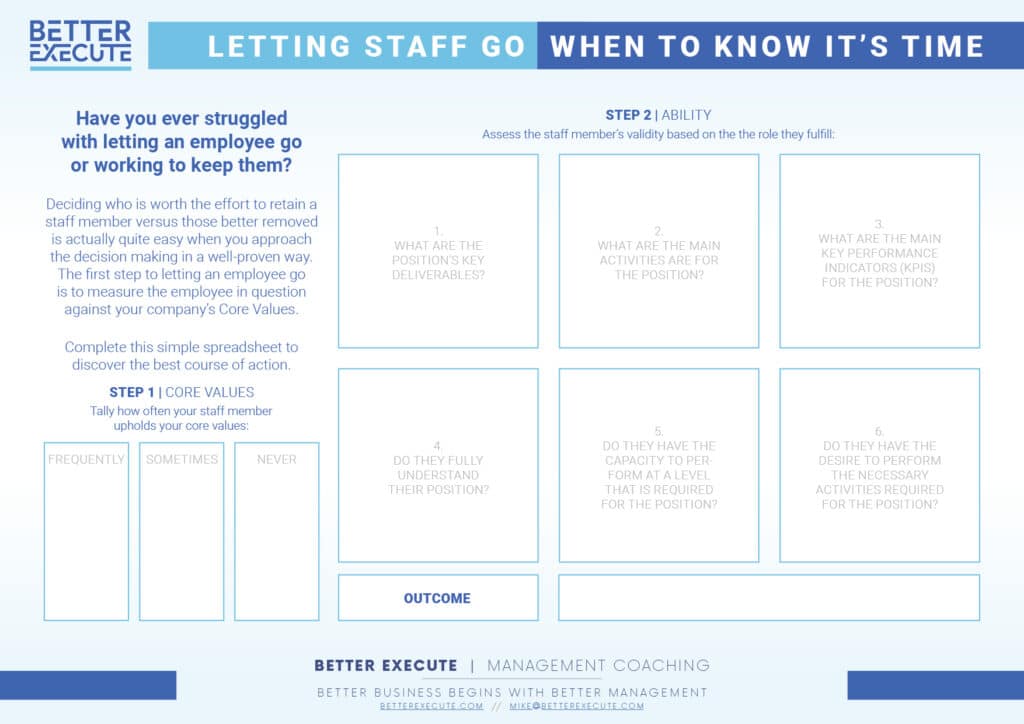- [email protected]
- 7402 Center Ave. Huntington Beach, CA 92647
Have you ever struggled with letting an employee go or working to keep them.
You might spend hours, days or even weeks in emotional discussions with business leaders trying to understand how to get various employees to acceptable levels of performance, but to no avail. This article focuses on providing a clear framework to diagnose whether you have an opportunity to fix a less-than-ideal employee performance situation or whether more drastic measures are needed.
With the current employee shortage it is always tempting to retain every employee possible rather than letting an employee go. However, the retention of one weak link can cause ramifications that may become detrimental to the entire team or business. Thus, it is always better to remove these weaker links because the cost of retention will always be higher than the modest void an exited employee will create in the short term.
Deciding who is worth the effort to retain versus those better removed is actually quite easy when you approach the decision-making in a well-proven way. The first step to letting an employee go is to measure the employee in question against your company’s Core Values.
This will be difficult if you have not developed well-established core values to promote and demote team members. But thankfully it is never too late to start. If you understand the necessity of Core Values and how they work within organisations but you have yet to implement this strategy into your company, put this article aside and spend the time necessary to implement them effectively. You will be grateful you did and it will always be time well spent for long-term gain.
If you have identified your company’s Core Values then ask yourself how frequently you observe the employee in question embodying them using a criterion of Frequently, Sometimes or Never. For an employee to align with your organisation there shouldn’t be any Nevers, with a mix of Sometimes and Frequently. It can be personally confronting to exit your first employee using Core Values as a decision-making process but when you see the impact on the rest of the remaining team you will realise that your decision of letting an employee go was wholly justified.
After you determine whether the employee in question aligns with your Core Values, the next step is to identify whether they have the ability to deliver what is required in their position or seat. In order to do this both objectively and effectively, it is important to have the employee’s position or role well defined. For this, three things should be addressed:
With this review of the employee’s position in hand you are now ready to evaluate your employee by asking yourself three questions:

Company culture and your core values aren’t just common topics in the pages of business management books, they are well-proven strategies for growing strong and profitable companies. Clearly defined position descriptions aren’t simply an HR requirement, they should help you and your employees clearly understand what is required of a role and how to measure whether a staff member is fulfilling that role proficiently.
Letting an employee go is never easy, but by following this process to assess your employees we are confident you will develop a happier and more productive team.
Enjoy the process!

Learn how to double your client referrals in just 30 days using a proven Customer Management Framework, For FREE.
The Game Changing FREE Framework Every B2B Business Needs.
We promise to keep your data safe as stated in our privacy policy.